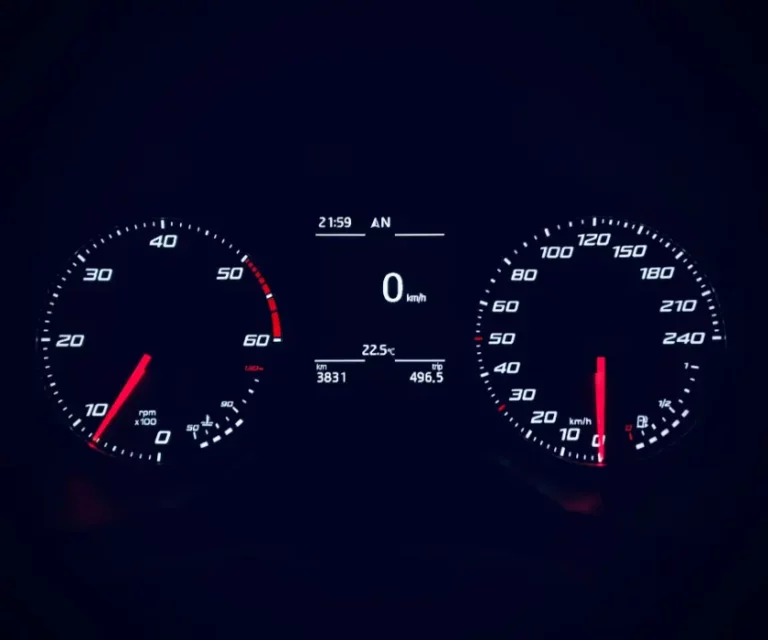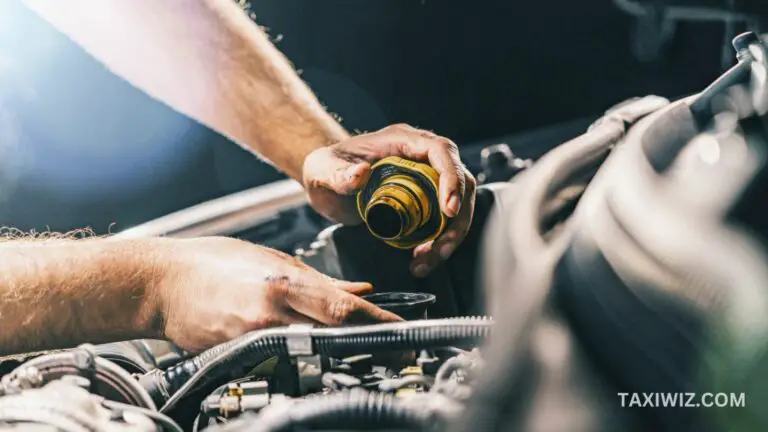E Brake Light Won’t Turn Off | What to Do?
Emergency brake lights or e-brakes are a vital part of the car’s parking process. It usually turns on when the drivers forget to release the parking brake. Furthermore, you can also use it to detect any malfunction in the braking system components.
If you notice that your car’s e-brake light is not turning off, it can happen due to one of the reasons below;
- Electrical malfunction
- Lack of brake fluid
- Interior fluid leakage
Our article will explore the possible reasons behind the e-brakes not turning off. Furthermore, it will also provide relevant solutions to help you fix the problem quickly.

Reasons Why E-Brake Light Won’t Turn Off
Most causes of the e-brake light not turning off happen because of malfunction or lack of maintenance. Keep on reading to find the specific reasons that can cause this issue to occur.
1. Electrical Abnormalities
The most common reason your e-brake light might not turn off is the battery’s underperforming. If the component fails to provide sufficient power to the car or if there is any inconsistency in the supply, then the indicator will remain on.
Consequently, the e-brakes might not power down if the electrical system malfunctions. A quick diagnosis will be necessary in this scenario to determine which specific component is causing the problem.
It’s also worth noting that any circuitry board abnormalities will prevent the e-brakes from turning off. This component consists of multiple switches and fuses. The problem can arise if one or more of them gets damaged or blows off.
Solution
Electrical components like the battery, circuitry board, and electrical system are incredibly intricate and sensitive.
Therefore, hiring a mechanic to repair or replace them is best. Doing it yourself without proper experience can damage other adjoining parts.
However, if you’re adamant about repairing it yourself, start by checking the battery fluids. A top-up will be necessary if there’s not enough battery water. On the other hand, you will need to adjust the switch’s pedal if there’s a problem with the circuitry.
2. Low Brake Fluid
If you drive the car for a long time without proper maintenance, it can cause the brake fluids to deplete. An indicator of this problem would be the e-brake lights not turning off. In that case, an immediate replenishment is necessary.
Low brake fluid makes it difficult for the car to control its handbrakes. Thus, it won’t be able to disengage the parking brake easily or register the disengagement. The difficulties in applying the brakes will cause the indicator not to turn off.

Solution
A thorough cleaning is essential before adding fresh brake fluid to the car. You must wipe the fluid reservoir thoroughly to remove dirt, grease, or debris. The oil will lose its quality and risk contamination if added without a clean-up.
Once the fluid reservoir is in a pristine condition, take off the oil cap and insert the brake fluid slowly. Conduct routine checks to ensure that the fluid levels are at the correct level to prevent this issue. Also, clean the component to prevent fuel clogs.
3. Broken Assembly Switch
The e-brake assembly typically has a switch on its side. Sometimes, this component breaks because of rough handling during the car’s routine maintenance. In that scenario, the e-brake light will not turn off.
Some vehicles have sensors on the e-brake assembly and the master cylinder or proportioning valve. If the switch breaks, then this component also malfunctions due to the rigidity of the switch. Thus, the e-brake refuses to deactivate in this situation.
Solution
A simple sign of whether the switch is broken is if the e-brake light turns off after disconnecting it. There are no repair methods for a broken assembly switch. You will need to replace the component entirely to solve the problem.
Thankfully, the replacement switches are relatively affordable and are easily available in most car workshops. However, hiring a mechanic is necessary to ensure that the component is properly adjusted in the assembly.
4. Brake Fluid Leakage
Besides noticing the parking brake’s status, the e-brake light is also responsible for monitoring the brake fluid levels. It will turn on if there’s any imbalance in the system. It will not turn off unless the problem is fixed.
The most common problem a car’s brake fluid system faces are the possibility of leaks and spills. You can easily notice this problem by checking for oil drops when parked. Typically, deficiencies in the master cylinder cause this problem.
Solution
Brake fluid leakages are easily solvable by following a simple checklist. Start by observing the brake system to find the location of the leak.
Leaks usually occur in the master cylinder, brake line, or brake caliper due to damage or rough use.
Begin by thoroughly cleaning the leakage spot to wipe out the dirt and oil. Then, take out the broken components and replace them with fresh parts. Add new brake fluid with a vacuum hose to minimize the chances of leaks.
Finally, seal the hose with a screw to secure the components. Test the brakes for further signs of leakage. If the component works effortlessly, then the e-brake light should turn off.
5. ABS Malfunctioning

Most modern car models feature an anti-lock braking system (ABS) which helps improve its handling. This mechanism usually activates if the car experiences rough use or harsh road conditions.
The ABS controls the brakes during such situations and makes the vehicle easier to navigate.
If there’s a problem with any of its components, then the e-brakes light will turn on. You will have to resolve the issue for the indicator to turn off again.
Solution
Although some parts of the ABS are repairable, it’s ideal to completely replace them to improve the system’s performance. Hire a mechanic’s service to install the components smoothly. The e-brake light will turn off once the issue is solved.
Related Post: Metal on Metal Brakes: All You Need to Know
Frequently Asked Questions [FAQs]
Can I drive my car while the e-brake light is active?
We strongly discourage driving while the e-brake indicator is on since it’s a sign that there’s an issue with the brakes. It significantly increases the chances of brake failure and other severe accidents while on the road.
Are e-brake lights resettable?
The e-brake light automatically resets itself when you lower the brake handle and disengage the system. If the light still remains on, then the car won’t budge despite shifting to “Drive”.
Does the emergency brake get rigid?
There is a chance of the emergency brake becoming rigid if the component is handled poorly. If it gets stuck, then simply toggle the part back and forth until it eventually becomes free.
Conclusion
A car’s e-brake light refusing to turn off is a bad omen that something is gravely wrong with its braking system. Whether it’s a part malfunctioning or the lack of braking fluid, an immediate solution is necessary.
Otherwise, you open yourself to a plethora of serious risks including brake failure. Therefore, it’s best to conduct a quick repair or replacement of components or gear to enjoy a safe and responsive braking system.
Related Post: Why Brakes Pulsate Even with New Rotors




